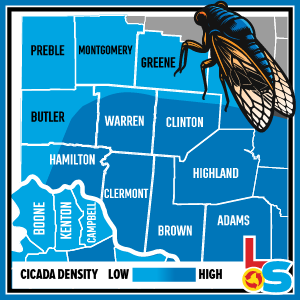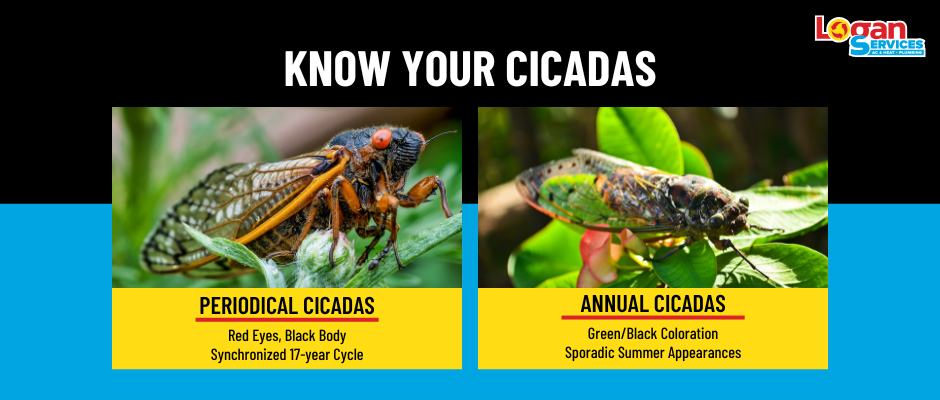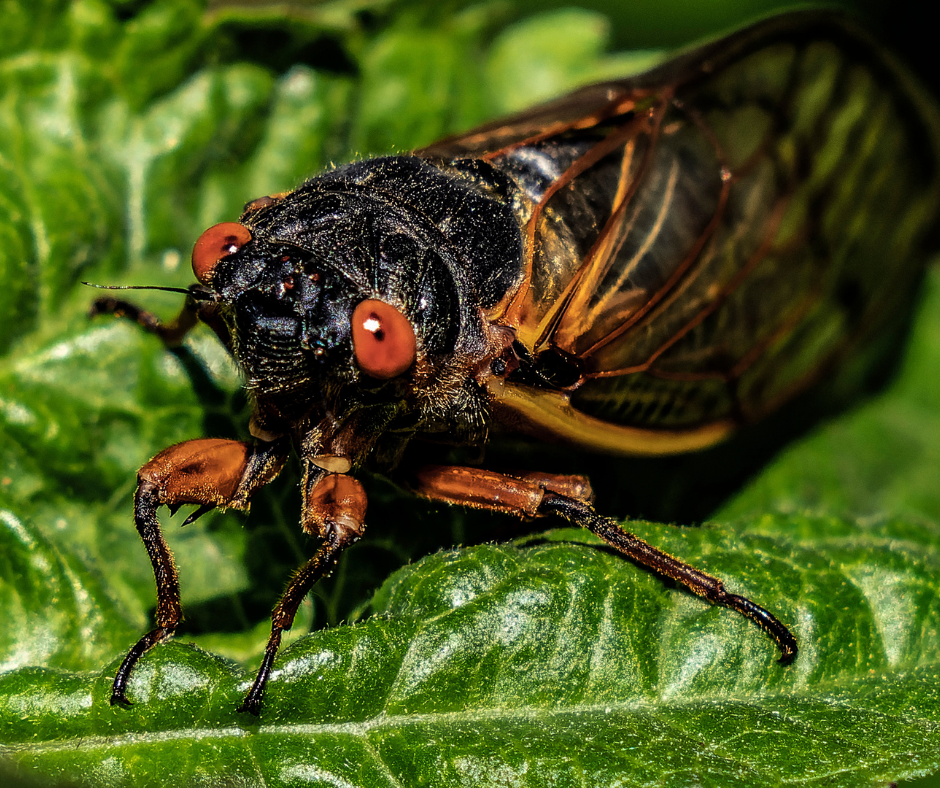The summer of 2025 will be buzzing for homeowners in western and southern Ohio—literally. The 17-year wait is over as Brood XIV cicadas emerge in massive numbers across parts of Cincinnati, Dayton, and beyond. These unique insects are part of a rare natural cycle that only occurs in specific parts of the country, and in 2025, our area is at the epicenter.
Periodical cicadas can bring unexpected challenges to your home’s comfort, from the overwhelming noise to disruptions to your outdoor HVAC unit. Now is the perfect time to make sure your system is ready to keep your home cool, quiet, and cicada-free. Call Logan Services A/C, Heat & Plumbing at (800) 564-2611 or book your HVAC inspection and repairs online.
Where in Ohio Will Cicadas Emerge in 2025?
The 2025 emergence will primarily impact communities along and east of the I-71 corridor. Expect heavy activity in:
- Hamilton County: especially the eastern and southern portions
- Butler County: mostly southern areas
- Clermont, Adams, and Brown Counties
- Montgomery and Greene Counties: including much of Dayton
- Franklin, Defiance, Logan, Highland, and Warren Counties
Neighboring areas in Northern Kentucky, such as Campbell and Kenton counties, may also experience light to moderate cicada activity, particularly in forested and rural zones.


When Will Periodical Cicadas Come Out in Ohio?
Typically, cicadas emerge when the soil about eight inches below the surface reaches at least 64°F. For Ohio, this means that the Brood XIV cicadas are expected to begin emerging in mid-May 2025, with peak activity during late May to early June. By the end of June, most of these insects will begin to die off as their short adult life cycle concludes.
Quick Timeline:
- Emergence begins: Around the second week of May 2025
- Peak season: Late May to early June
- Cycle ends: By late June 2025
What Time of Day Are Cicadas Most Active?
Cicadas typically emerge in the late afternoon to early evening, especially after a warm rain. This timing allows them to surface more easily, as the ground becomes softer and temperatures are ideal.
Once they emerge, cicadas:
- Climb trees or other vertical surfaces to molt into their adult form.
- Become most active and make the most noise during daylight hours, especially in the morning and late afternoon.
How Will the Brood XIV Cicadas Affect My HVAC System?
While cicadas aren’t harmful to your HVAC system in the same way extreme weather or debris might be, their sudden appearance in massive numbers can cause some inconveniences, especially if your system isn’t properly maintained.
Here’s What You Should Know:
1. Outdoor Units Can Attract Cicadas
Your outdoor A/C condenser unit may become a popular landing spot for cicadas. While they don’t nest or damage the equipment, large numbers of dead insects can clog the fins or block airflow over time.
2. Noise May Drive You Indoors
Cicadas can be incredibly loud, reaching up to 100 decibels in some areas. Most homeowners will want to keep their windows shut, which means your A/C will run more frequently to maintain a comfortable home temperature. This is a good reason to make sure your system is clean, efficient, and ready for extended use.
3. Vent and Filter Check-Ups Are Important
While cicadas themselves won’t enter your ductwork, any open or damaged vents could allow insects or outdoor debris inside. This is a great time to inspect and replace your air filters and ensure all vents are properly sealed.
4. Cicadas Can Attract Rodents and Other Pests
The large number of dead cicadas can become a food source for rodents, birds, and other pests. These animals may nest near or inside your HVAC equipment, chewing wires or damaging components in the process. Keeping the area around your outdoor unit clean and professionally maintained is crucial to preventing this issue.
These issues can occur during any large cicada emergence. The return of Brood XIV in 2025 is expected to bring one of the most intense cicada swarms in recent decades to Cincinnati and western Ohio. That makes it especially important for homeowners to take a few extra precautions with their HVAC systems this season. If you notice any issues with your HVAC system once the cicada emergence begins, call Logan Services at (800) 564-2611 for quick, reliable A/C maintenance and repairs!
What Makes Periodical Cicadas Unique?
Unlike annual cicadas, which appear every summer, periodical cicadas are part of specific “broods” that emerge in synchronized cycles every 13 or 17 years. Brood XIV is one of the largest and most widespread broods in the country.

When Will Cicadas Return to Ohio?
If you miss the 2025 emergence, or simply want to plan ahead, there are a few more cicada events on the horizon. However, nothing will match the size and impact of Brood XIV, which last appeared in Ohio back in 2008.
- 2027: Moderate emergence in Northern Kentucky and parts of southern Ohio
- 2034: Smaller emergence expected in central Ohio
- 2038: Significant return for Dayton, Columbus, and nearby communities
Are Cicadas Harmful?
Despite their loud noise and overwhelming numbers, cicadas are not dangerous to people or pets. They cannot bite or sting, and they don’t carry diseases.
However, small trees and shrubs (especially newly planted ones) can be vulnerable to cicada egg-laying activity. Covering young plants with netting during peak cicada season can help prevent damage.
Prepare Your Home (and Your Ears)
While cicadas can’t damage your HVAC system directly, their sheer numbers and noise may drive you to keep windows closed. Be sure your home comfort system is up to the task of keeping cool and quiet this summer.
At Logan Services, we offer:
- Free, Same-Day Estimates and Next-Day Installation
- A System for Every Home & Budget
- Fast, Friendly Service Across Cincinnati, Dayton, and Columbus
- Expert Maintenance to Keep Your System Cicada-Proof and Summer-Ready
Don’t let the cicadas take over your peace and quiet; schedule your HVAC check-up or replacement today! Call (800) 564-2611 or book online today!
Brood XIV Cicadas in Ohio 2025: Frequently Asked Questions
The Brood XIV cicadas are expected to begin emerging in mid-May 2025, with the largest activity anticipated in late May and early June. By the end of June, the buzzing will taper off as the adult cicadas complete their life cycle. The entire emergence typically lasts about 4 to 6 weeks.
Cicadas begin emerging in mid-to-late spring, typically once soil temperatures reach 64°F, which often occurs around the second week of May in Ohio.
They are most likely to emerge in the late afternoon to early evening, especially after a warm rain softens the ground. Once above ground, they are most active during daylight hours, particularly in the morning and late afternoon, when their signature mating calls are at their loudest.
No, cicadas are not dangerous to people or pets. They don’t bite, sting, or transmit diseases. While their appearance and sound may seem overwhelming, cicadas are entirely harmless to humans.
The only minor concern is for young trees and shrubs, as female cicadas may lay eggs in small branches, which can cause some twig damage. If you’ve planted new trees recently, consider using protective netting during peak cicada season.
Yes, while cicadas won’t directly damage your HVAC system, the Brood XIV emergence could lead to clogged outdoor units, increased system usage, and even pest activity around your equipment. A quick pre-season check-up can help prevent issues and keep your home comfortable and quiet during cicada season.





















